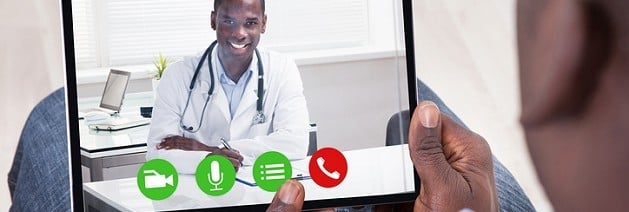
The patient experience includes more than a video appointment.
Ask any mother working from home with two toddlers if she prefers a video appointment or trekking to the doctor's office with her two children in tow. Patients are loving telehealth and we want to keep them coming back.
In actuality, the telehealth patient experience begins with the first email or text. The telehealth processes you are communicating may include a number of steps, downloads, and installations. This complexity can lead to visual overload and confusion. The opposite of a positive experience.
Design can help you communicate more clearly.
Adding illustrations and screenshots helps to break-up the text into digestible bites and enables you to show and not tell a patient how to navigate. Simplicity is the key.
Check out this before and after example

The AFTER image helps the reader by presenting a limited number of options. It also gives them a specific number to call with technical issues and another number if they need to talk to the doctor's office. The simplicity of this presentation adds to a positive experience.
Telehealth communications and instruction checklist
Keep refining your message, works towards ease of use, and push for clarity. Progress can be made when the patient experience is kept top-of-mind and IT, Operations, and Communications work together.
Simple language, simple graphics it all helps build the patient experience.
Need a review?
If your telehealth communications need a review, we can help. Let’s talk, email me at stephanie@strategic.health
At Strategic Health, your organization’s needs drive the design. Solutions are built by asking the hard questions—and learning as much as possible about your audience. Our specialty is communicatio... Read more
What is wrong with this picture?You feel it too, right? Don’t you want to tell them:not to sit side by side, to social distancewait in the car till calledonly bring those with ...read more
You've talked to department heads, frontline staff and patients about your healthcare organization's transition from paper-based records to EMRs.You've listened to their ...read more
Launching a new program is the perfect opportunity to consider your communications strategy, before anything new is written or designed. This critical step takes a little extra time, ...read more
What is the ideal brand voice? Does such a thing exist?We think so and here’s how we define it:An effective brand voice creates confidence, reassurance and resolve.Confidence ...read more